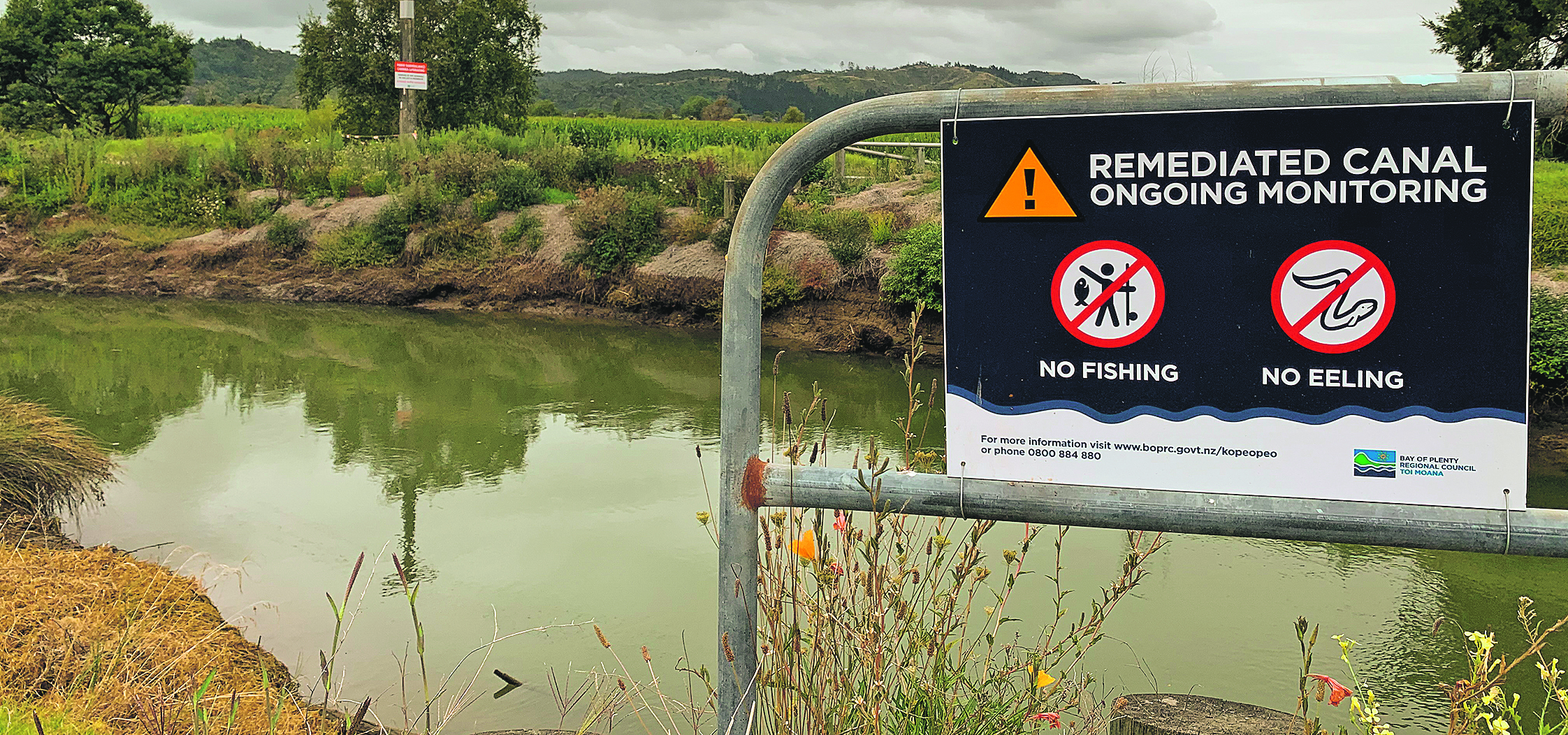The Bay of Plenty Regional Council will be making a second request to the Ministry for the Environment for funding to remediate the contaminated Kopeopeo canal after its first request was refused.

The council
is seeking funding from the ministry’s Contaminated Sites
Remediation Fund to bring the ministry’s contribution to
the Kopeopeo Canal Remediation Project up to 50
percent.
To date, the project has cost $22 million of
which the ministry has contributed $8
million.
Dredging and validation of the 5.1
kilometre canal project was completed in August last year
and the council has now moved into the bioremediation phase
of the contaminated sediment.
Sediment has been
inoculated with fungus and 400 trees have been planted with
a further 1400 due for planting this winter.
The
council asked the ministry for further funding in March 2019
but it was refused because the remediation fund was
oversubscribed.
The council’s risk and assurance
committee has decided to reapply for funding in this
year’s funding round.
Chairperson councillor
David Love said the letter the council received from the
ministry implied that it would have been successful in
gaining funding had the fund not already been
exhausted.
Applications for this funding round close at
the end of March. If successful, the ministry would then
have contributed half of the overall cost.
As well
as the funding issue there was also concern raised at the
committee meeting about what would happen with the
remediation of the canal on private property.
Staff in
charge of the project said they would prefer to have the
funding issue sorted for the first project before beginning
another but said it would need to be a joint effort between
the council, the ministry and the private land
owners.
The council has remediated a 5.1km stretch
of the canal. The two privately-owned sections yet to be
remediated total 4.1km.
Staff noted that there was a
chance eels from the unremediated section could migrate into
the remediated section during a flood and give the false
impression that the remediation had not been
successful.

To mitigate
this, project manager Brendon Love has recommended passive
in-situ sampling devices that can measure dioxins available
in the food chain.
This will be used alongside baseline
tissue sampling of eels which staff believe would provide
public assurance that the remediation has been
successful.
While eel sampling, groundwater and
salt marsh monitoring is expected to continue for some
years, the canal is now safe for water recreational
activities such as kayaking and swimming.
A
karakia will be performed on Saturday after which public
access to the water will be reinstated.
Sidebar: What is the Kopeopeo Canal Remediation Project?
The
Kopeopeo Canal was contaminated between the 1950s and late
1980s as a result of stormwater discharges from the old
Whakatane Board Mill which treated timber using
Pentachlorophenol.
The Kopeopeo Canal Remediation Project
has moved 35,000 cubic metres of dioxin contaminated
sediment from the canal to containment sites for
bioremediation.
Bioremediation of the sediment is
expected to take 15 years and will use two different types
of fungi and bacteria consortium to break down the dioxins
and clean the contaminated sediment.
The project won Best
Regional Remediation Project at last year’s Australian
Land and Groundwater Association awards
ceremony.



 Keith Rankin: Make Deficits Great Again - Maintaining A Pragmatic Balance
Keith Rankin: Make Deficits Great Again - Maintaining A Pragmatic Balance Richard S. Ehrlich: China's Great Wall & Egypt's Pyramids
Richard S. Ehrlich: China's Great Wall & Egypt's Pyramids Gordon Campbell: On Surviving Trump’s Trip To La La Land
Gordon Campbell: On Surviving Trump’s Trip To La La Land Ramzy Baroud: Famine In Gaza - Will We Continue To Watch As Gaza Starves To Death?
Ramzy Baroud: Famine In Gaza - Will We Continue To Watch As Gaza Starves To Death? Peter Dunne: Dunne's Weekly - A Government Backbencher's Lot Not Always A Happy One
Peter Dunne: Dunne's Weekly - A Government Backbencher's Lot Not Always A Happy One Richard S. Ehrlich: Cyber-Spying 'From Lhasa To London' & Tibet Flexing
Richard S. Ehrlich: Cyber-Spying 'From Lhasa To London' & Tibet Flexing